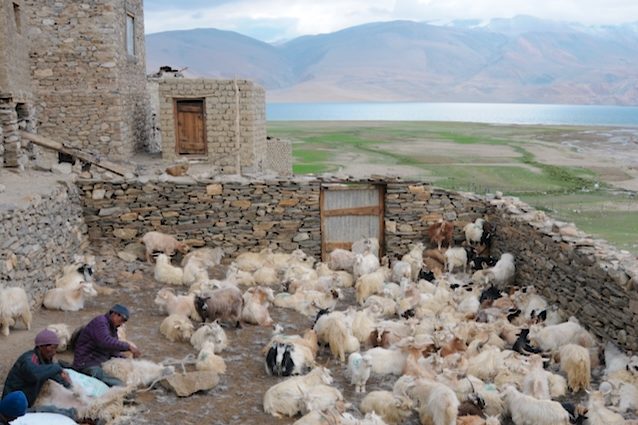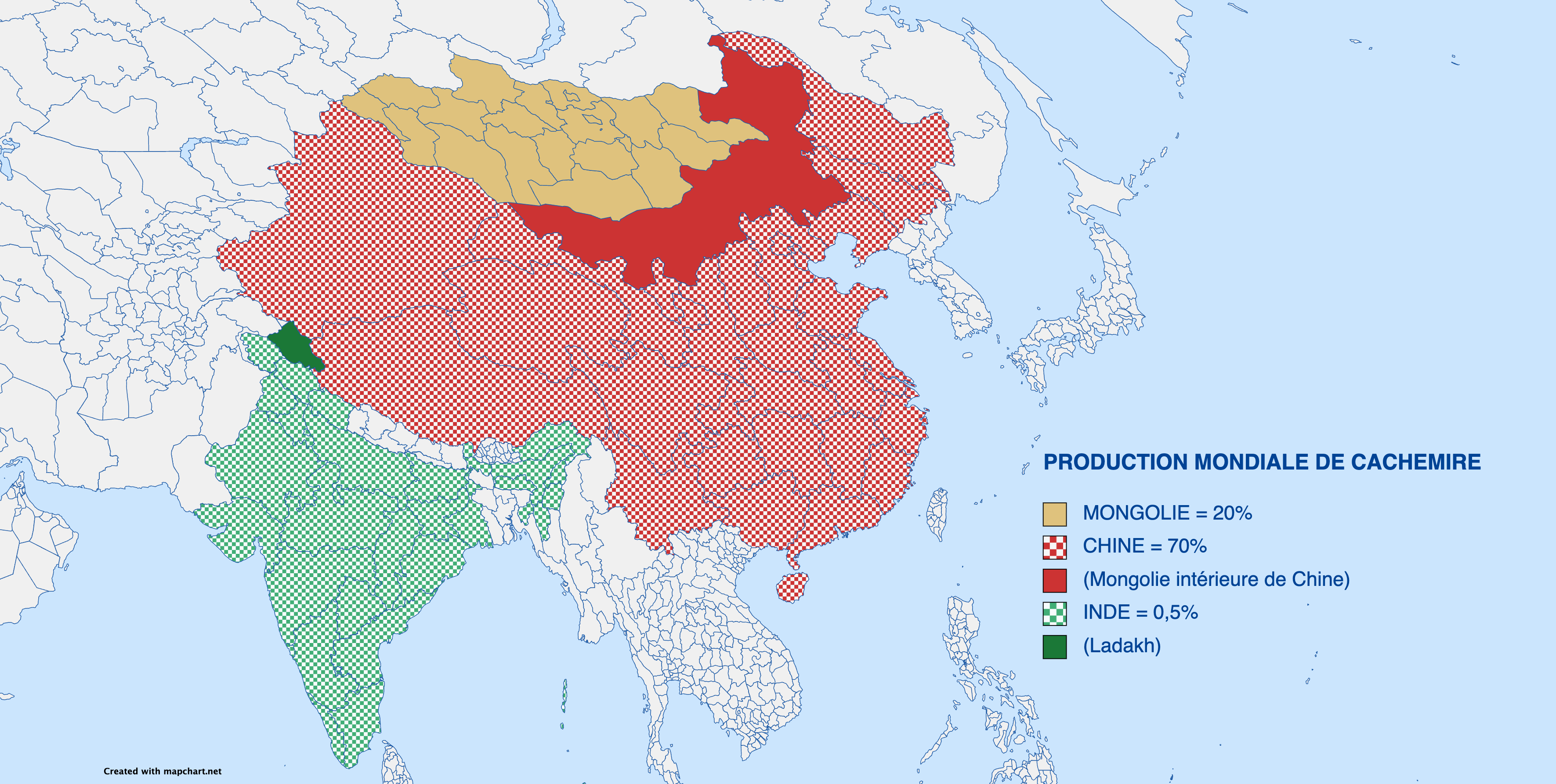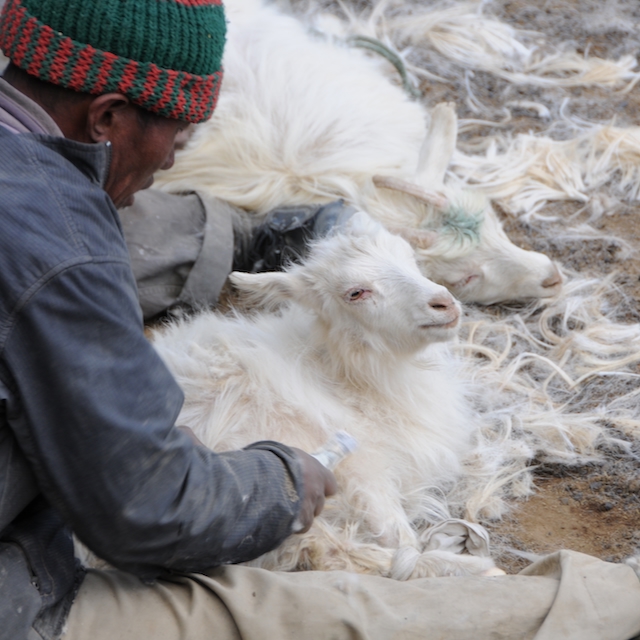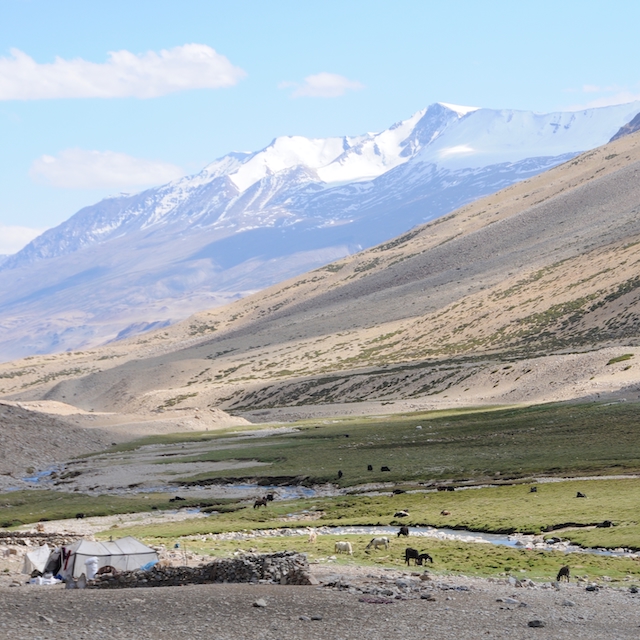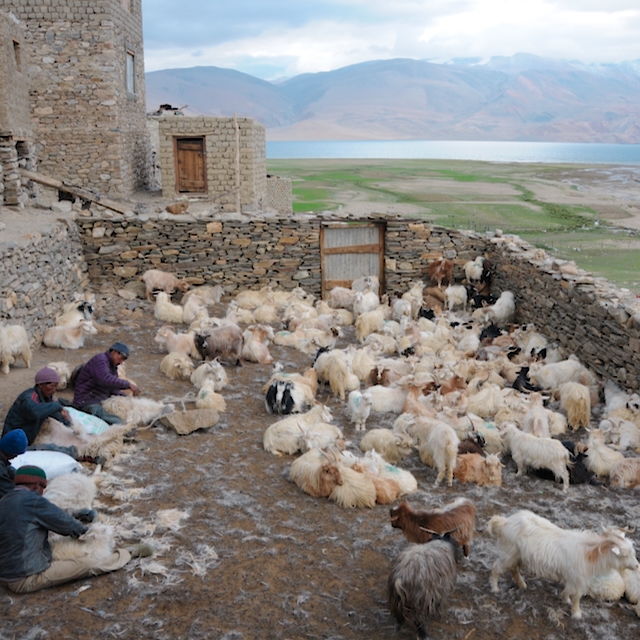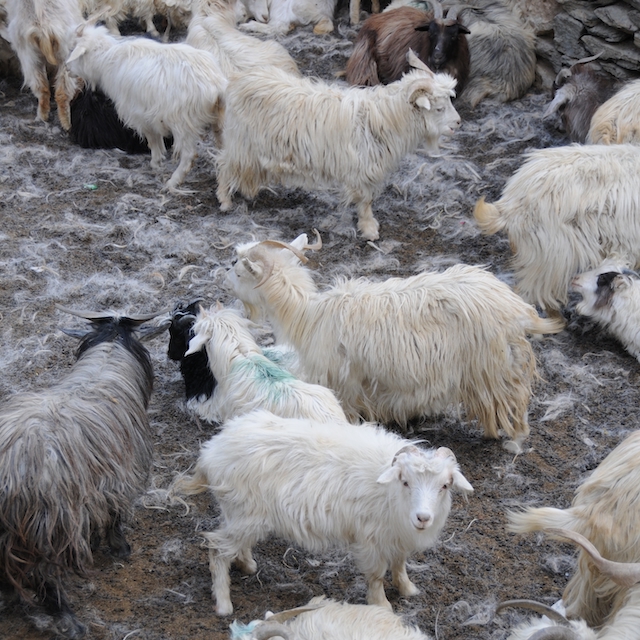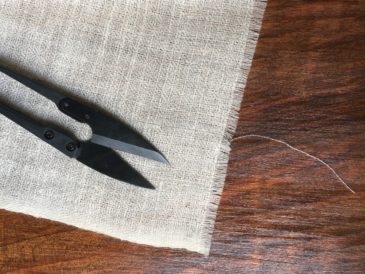With origins dating back to antiquity and a renowned weaving industry since the 15th century, pashmina is the oldest cashmere variety and can therefore be considered the historical cashmere. Today, however, it accounts for just 0.5 th of the world’s cashmere production, while the global market is 90% dominated by industrial production from China and Mongolia.
To understand what may have happened, we need to delve into the history of cashmere. We investigated…
This map shows the countries producing the highest quality cashmere, with a fibre diameter of less than 16 microns. The remaining 9.5% is produced by Iran, Afghanistan and other Central Asian countries, as well as Australia, New Zealand and the United States, but is of a lower quality. In red on the map: Inner Mongolia, the Chinese province that concentrates the bulk of cashmere production in China, and therefore in the world. It is worth noting that many brands do not acknowledge the Chinese origin of their cashmere and prefer to play on words by claiming an ‘Inner Mongolia’ origin for image and marketing reasons, when in fact the label should say ‘made in China’.
Historically, the breeding of cashmere goats began quite late in Mongolia and is said to have been derived from that of Kashmir and the Himalayas. Tradition has it that a group of Tibetan nomads settled on Mongolian pastures at the end of the 18th century, after a long migration of 2,000 km. Although Mongolian ‘yama’ goats are descended from Pashmina ‘changra’ goats, 200 years later the 2breeds are still considered to bedistinct .
The late beginnings of cashmere in Mongolia coincided with the period when the West discovered cashmere in the form of traditional Kashmir shawls, and began to take an interest in the material. European manufacturers were quick to source the fibre for their own production, turning first to pashmina from the Himalayas. But the market was impenetrable, locked in by centuries of trade agreements between the shepherds of Tibet and the weavers of Kashmir. This is how Westerners came to buy their supplies in Mongolia, where production gradually expanded…
In the 20th century, all hell broke loose. Transformed into mass production, the cashmere industry in China and Mongolia underwent considerable expansion, but this meteoric growth was accompanied by a major setback: a devastating ecological disaster!
The number of goats is exploding, from 2.4 million in 1949 in China to 120 million today, with this anarchic growth breaking the ancestral balance of species distribution inherited from Tibetan wisdom. The consequences for the ecosystem are dramatic. The goat is a robust animal, adapted to surviving in a hostile environment, but its behaviour is devastating to its environment. Theproblem is far from new: in this very interesting article from 1958, with its premonitory overtones, the deputy director of the Paris Museum of Natural History points out that the goat is responsible for the deforestation of the entire Mediterranean basin, in the same way that it has destroyed the vegetation of all the islands into which it has been introduced…
Goats damage their environment by grazing grass down to the roots, destroying plants and therefore topsoil, and accelerating soil erosion with their sharp hooves. In Mongolia and China, this overgrazing has rapidly led to the desertification of the steppes, with irreversible consequences for one of the world’s largest ecosystems. Not to mention the systematic mistreatment of animals on these intensive farms, as denounced by many observers, including PETA, whose investigation into these brutal practices caused a stir in 2019. You can find the article here, but the video can be painful to watch…
The environmental impact of cashmere production in China and Mongolia therefore seems a long way from the expectations of sustainable ethical fashion, and while Mongolia is trying to reduce the size of its herds, a few initiatives are emerging to try to curb the predicted disaster by replacing intensive farming with smaller herds raised with respect for the goats and their environment.
And yet all the brands are currently telling you that their cashmere from China and Mongolia is ethical and sustainable, but what is the reality? You only have to look at the official statistics published each year by the Schneider group to be sure: the population of Mongolian goats continues to grow inexorably! Ecology doesn’t weigh much against the economic and financial stakes of the industry, and the uninformed consumer will find it very hard not to be manipulated by these “greenwashing” practices, this marketing method consisting of communicating with the public by using the ecological argument in a misleading way to improve one’s image… At the moment, talking about “ethical cashmere” for Mongolian cashmere is an oxymoron!
And yet this ethical, eco-responsible and sustainable cashmere already exists: pashmina…
Unlike Chinese and Mongolian cashmere, which developed at the end of the 19th century to meet ever-increasing Western demand, pashmina has always avoided the mistakes of modern industry and the excesses of productionism. Rich in centuries of know-how, its production has been based on traditions of excellence since the 15th century, and even today quality still takes precedence over quantity. In Ladakh, 200,000 goats are raised in small herds on one of the most inhospitable lands on the planet: the Himalayan high plateaux of Changtang. The harvesting of pashmina is an example of sustainability and ecology: the Changpa shepherds and their animals live in harmony with their natural environment, while their ancestral nomadic way of life helps to preserve the fragile mountain ecosystems. Carried out in such a way as to preserve natural resources for future generations, this traditional, artisanal production respects animals and nature by leaving no footprint on the environment, making Pashmina the only true sustainable cashmere.
Choosing genuine pashmina is not just about opting for a high-quality fashion accessory that combines the incomparable softness and warmth of this rare and precious fibre, it’s also about helping to preserve unique craft traditions by supporting local communities: a truly eco-responsible choice for more sustainable and ethical fashion!

